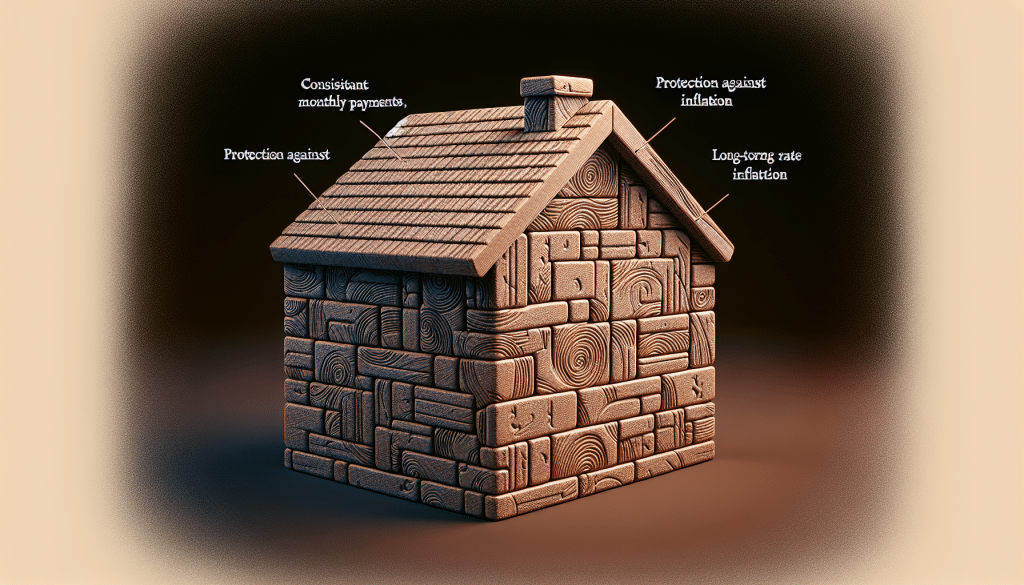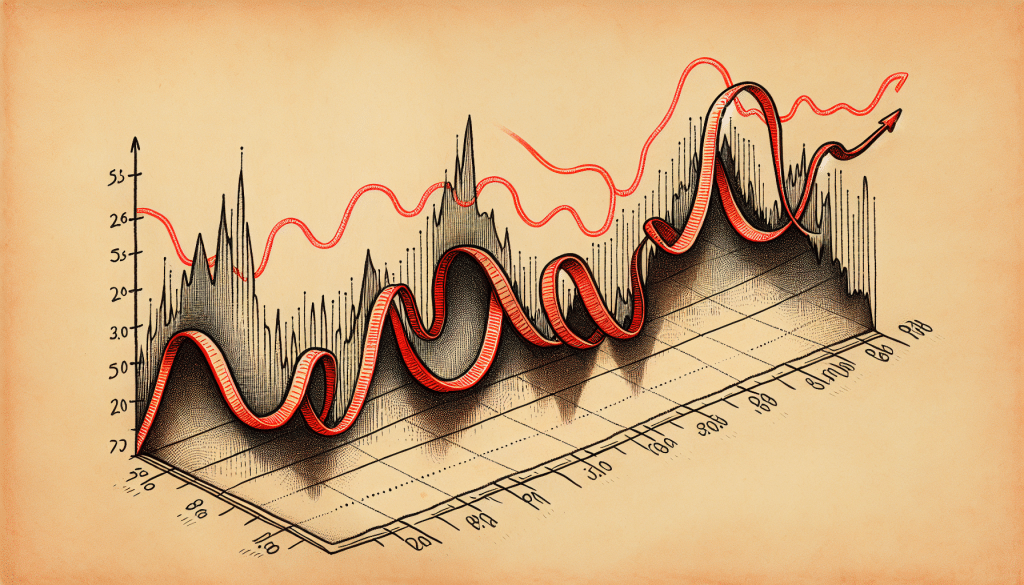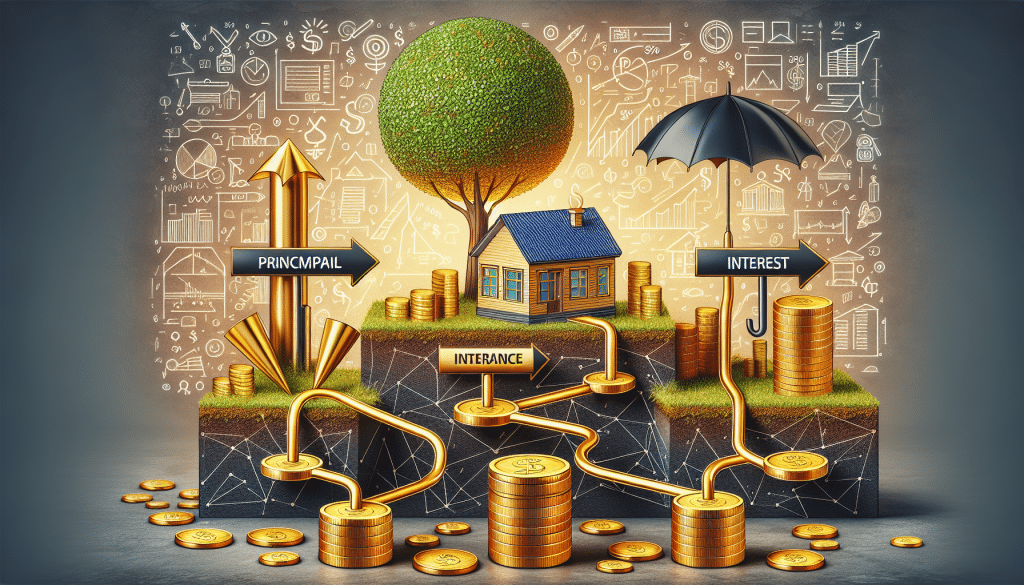Deciding on a mortgage can be straightforward when you understand your options. Fixed Rate or Adjustable-Rate Mortgage? A fixed-rate mortgage guarantees your interest rate stays the same throughout the loan, providing financial predictability. This article dives into what a fixed-rate mortgage entails, how it stacks up against an adjustable-rate mortgage, and the key considerations to help you determine which may suit your long-term financial goals.
Key Takeaways
Fixed-rate mortgages offer stability with unchanging interest rates and predictable monthly payments, ideal for long-term budgeting and financial planning.
Adjustable-rate mortgages (ARMs) start with lower initial interest rates that become variable after the fixed period, potentially leading to fluctuating monthly payments and budgeting uncertainty.
The decision between fixed-rate and adjustable-rate mortgages depends largely on personal financial priorities, with fixed-rate loans offering predictability and ARMs providing initial savings that could change with market fluctuations.
Table of Contents
Exploring Fixed Rate or Adjustable-Rate Mortgage
The path towards homeownership is often paved with a critical question: Should you opt for a fixed-rate or an adjustable-rate mortgage? Grasping the workings of each can help you make this decision. A fixed-rate mortgage, as the name suggests, features an interest rate that remains constant throughout the duration of the loan, providing stability in your monthly payments. Common terms for fixed-rate mortgages are typically 30 and 15 years, although lenders may offer different ranges.
How Fixed Rate Mortgages Work
The beauty of a fixed-rate mortgage lies in its simplicity. The interest rate you sign up for is the rate you’ll pay over the entire duration of the loan. This constancy applies whether you choose a 15-year term or a 30-year term.
For example, a $250,000 fixed-rate mortgage over a 30-year term would yield a monthly mortgage payment of $1,467. However, shortening the term to 15 years would elevate the monthly payment to $1,911.
The assurance of consistent payments comprises a significant benefit of fixed-rate mortgages.
How Adjustable-Rate Mortgages Work
On the other hand, adjustable-rate mortgages (ARMs) offer a different approach. These types of mortgages, also known as adjustable rate mortgage arm, start with an interest rate that is fixed for an initial period, and then it becomes variable. So, if you choose a 5/1 ARM, your interest rate would remain unchanged for the first five years and then adjust annually based on a benchmark rate plus an additional spread.
This variable nature implies that your monthly payments could fluctuate over time, adding complexity to budgeting.
Key Features of Fixed Rate Mortgages

Consistency is the hallmark of fixed-rate mortgages. Your monthly principal and interest payments remain stable throughout the loan term, providing a clear path to homeownership. The predictability of these payments is a crucial advantage that contributes to long-term financial stability for homeowners.
However, it’s worth noting that while your mortgage payment remains constant, the total monthly payment could fluctuate due to changes in property taxes and homeowners insurance costs.
Key Features of Adjustable-Rate Mortgages

Variability is a distinctive characteristic of adjustable-rate mortgages. After the initial fixed-rate period, the interest rate may increase or decrease, resulting in fluctuating monthly payments. On the bright side, ARMs typically start with lower introductory rates than fixed-rate mortgages, making the initial payments more affordable. However, these rates can adjust based on market conditions, which can lead to higher or lower payments in the future.
Benefits of Choosing a Fixed Rate Mortgage
If stability and predictability are high on your list of priorities, a fixed-rate mortgage could be an excellent choice. These mortgages are valued for their:
Predictable monthly payments, which allow homeowners to budget with confidence
Stability, which helps protect borrowers’ savings from being eroded by inflation
Investment stability over time
Predictable Monthly Payments
A prominent advantage of fixed-rate mortgages is the reliability of the monthly payments. Regardless of what happens in the market, your monthly principal and interest payments remain the same over the life of the loan. This consistency allows homeowners to plan their monthly budget effectively, without worrying about potential mortgage payment increases.
Long-Term Financial Planning
Fixed-rate mortgages offer several benefits, including:
Steady monthly payments
Clear amortization schedule
Fixed interest rate
Ability to calculate total interest paid over the lifespan of the loan
Financial stability and predictability
These advantages make fixed-rate mortgages a popular choice for homeowners.
Benefits of Choosing an Adjustable-Rate Mortgage
If potential cost savings are your target, an adjustable-rate mortgage could merit consideration. ARMs typically start with a lower initial interest rate compared to fixed-rate mortgages, which can result in lower monthly payments during the initial fixed period.
Additionally, if market interest rates decrease, or interest rates drop, when the mortgage resets, your monthly payment may also decrease, leading to potential opportunities to save money.
Drawbacks of Fixed Rate Mortgages
Notwithstanding their advantages, fixed-rate mortgages carry a few limitations. The most notable drawback is that they often start with higher interest rates compared to adjustable-rate mortgages. This higher initial rate can result in paying more interest over the life of the loan.
Higher Initial Interest Rates
The initial interest rate on a fixed-rate mortgage is typically higher than that of an adjustable-rate mortgage. This difference can result in higher monthly payments initially. Although the rate remains the same over the life of the loan, it may lead to paying more interest over time compared to an ARM, depending on market conditions.
Limited Flexibility
Fixed-rate mortgages also suffer from inflexibility, as they can’t benefit from market interest rate reductions. Once you agree to a rate, you’re locked into it for the duration of the loan. So, even if market conditions improve, you won’t be able to take advantage of lower interest rates without refinancing.
Drawbacks of Adjustable-Rate Mortgages
Despite their potential savings, adjustable-rate mortgages present unique challenges. The key concern is that your monthly payments can increase if interest rates rise after the initial fixed-rate period. This fluctuation introduces uncertainty and can make budgeting difficult.
Comparing Fixed Rate Mortgages to Adjustable-Rate Mortgages
The choice between a fixed-rate and adjustable-rate mortgage typically hinges on two primary factors: stability and affordability. Fixed-rate mortgages offer stability with consistent interest rates, while ARMs may offer lower initial costs but may lead to varying future costs depending on market conditions.
Stability vs. Lower Initial Payments
Fixed-rate mortgages, also known as fixed rate loans, offer stability with consistent interest rates, which means your monthly payment remains the same throughout the life of the loan.
On the other hand, adjustable-rate mortgages usually start with a lower interest rate, which can lead to lower initial payments. However, these payments can increase or decrease over time, depending on how the interest rate adjusts.
Long-Term Costs and Savings
The long-term costs and potential savings also vary between fixed-rate and adjustable-rate mortgages. Fixed-rate mortgages may result in higher total interest costs over the life of the loan due to their higher initial interest rates.
Conversely, the cost-effectiveness of an adjustable-rate mortgage depends on market rate changes and when the rate adjustments occur.

Factors to Consider When Choosing a Fixed Rate Mortgage
Multiple factors come into play when contemplating a fixed-rate mortgage. The length of the loan term and the prevailing interest rates are two of the most significant considerations as they directly influence the affordability of the mortgage.
Loan Term
The length of the loan term has a substantial impact on the affordability of a mortgage. A shorter term, such as a 15-year fixed-rate mortgage, typically comes with lower interest rates and faster equity growth but higher monthly payments.
Conversely, a longer term like a 30-year mortgage results in lower monthly payments but slower equity growth and more interest paid over the life of the loan.
Interest Rates and Market Conditions
Interest rates and market conditions also play a pivotal role in your mortgage decision. Interest rates on fixed-rate mortgages are influenced by the economic climate, such as the Federal Reserve’s control over short-term interest rates and the yield on the U.S. Treasury 10-year bond. As such, it’s beneficial to monitor these factors to anticipate changes in mortgage interest rates.
Expert Insights: Brad Bailey on Fixed Rate and Adjustable Rate Mortgages
As the owner and operator of North Florida’s Elite Lending Service, Inc., Brad Bailey brings over 20 years of experience in the mortgage industry. His insights provide valuable perspectives on fixed and adjustable-rate mortgages.
Brad Bailey’s Experience with Fixed Rate and Adjustable-Rate Mortgages
Initiating his journey in the mortgage business in 1997, Bailey possesses an extensive understanding of the mortgage market. His background in wholesale mortgages contributes to his in-depth knowledge of underwriting processes, allowing him to guide clients towards the most suitable mortgage products. His unwavering commitment to aiding individuals in their homeownership journey led to the establishment of Elite Lending Service, underlining his devotion to the mortgage industry.
Elite Lending Service, Inc.’s Approach to Fixed Rate and Adjustable-Rate Mortgages
Elite Lending Service, Inc., one of the top mortgage lenders, operates with a broker model, offering a diverse portfolio of mortgage financing options, including:
Conventional loans
FHA loans
VA loans
Jumbo loans
Loans for self-employed borrowers
The company prides itself on its commitment to open, honest, and transparent communication, coupled with educational resources and a focus on providing solution-focused services.
Utilizing multiple guidelines, Bailey and his team negotiate equitable deals, guaranteeing optimal financing products tailored to diverse client scenarios.
Summary
To sum it up, both fixed-rate and adjustable-rate mortgages come with their unique benefits and drawbacks. While fixed-rate mortgages offer stability and predictability, they may start with higher interest rates. Conversely, adjustable-rate mortgages typically offer lower initial payments but can lead to varying future costs depending on market conditions. The decision between the two comes down to your financial situation, goals, and risk tolerance. Remember, the right mortgage for you is the one that best aligns with your long-term financial plan.
Frequently Asked Questions
What is the main difference between fixed-rate and adjustable-rate mortgages?
The main difference between fixed-rate and adjustable-rate mortgages is that fixed-rate mortgages have a constant interest rate throughout the loan term, providing stability in monthly payments, whereas adjustable-rate mortgages start with a fixed interest rate for an initial period, after which the rate becomes variable, leading to potential changes in monthly payments.
What are the benefits of fixed-rate mortgages?
Fixed-rate mortgages offer stability and predictability, allowing homeowners to budget with confidence as their monthly payments remain unchanged. Additionally, they protect borrowers’ savings from inflation, providing investment stability.
What are the drawbacks of adjustable-rate mortgages?
Adjustable-rate mortgages pose a risk of higher future payments if interest rates rise after the initial fixed-rate period, creating uncertainty and difficulty in budgeting. It’s important to carefully consider this drawback before choosing this type of mortgage.
When might an adjustable-rate mortgage be a good choice?
An adjustable-rate mortgage might be a good choice if you are seeking potential cost savings due to its lower initial interest rate, resulting in lower monthly payments.
What factors should I consider when choosing a fixed-rate mortgage?
When choosing a fixed-rate mortgage, consider the loan term and prevailing interest rates as they directly impact affordability.
